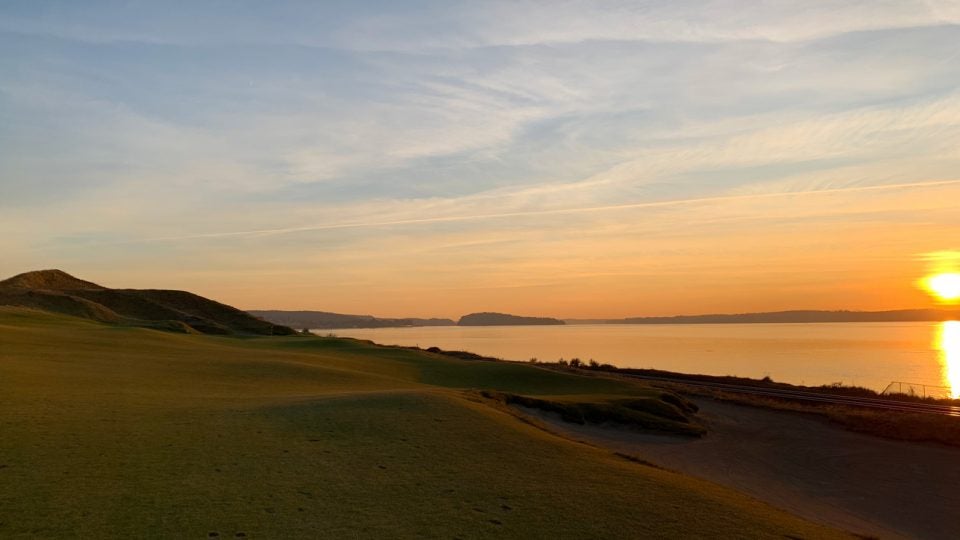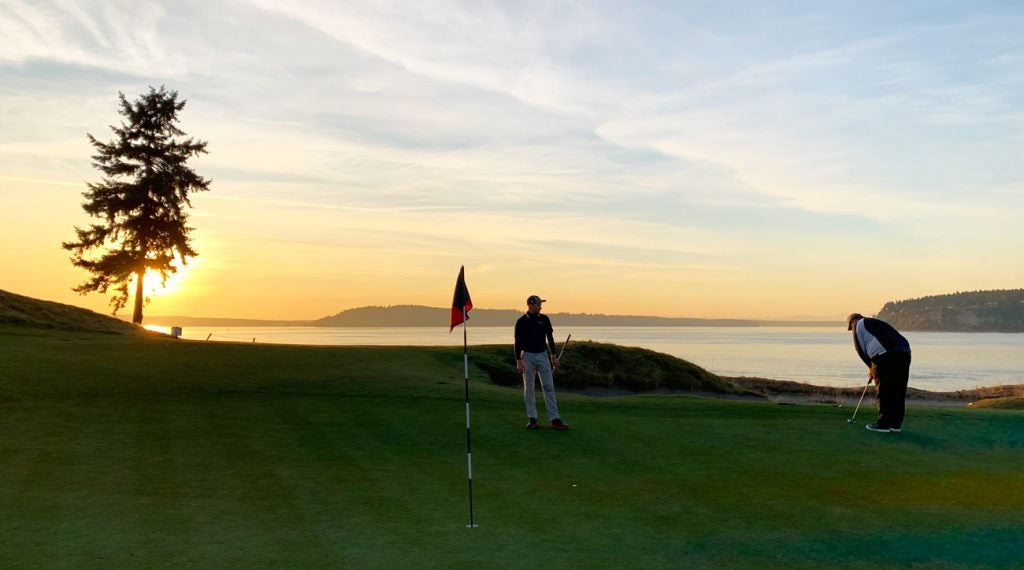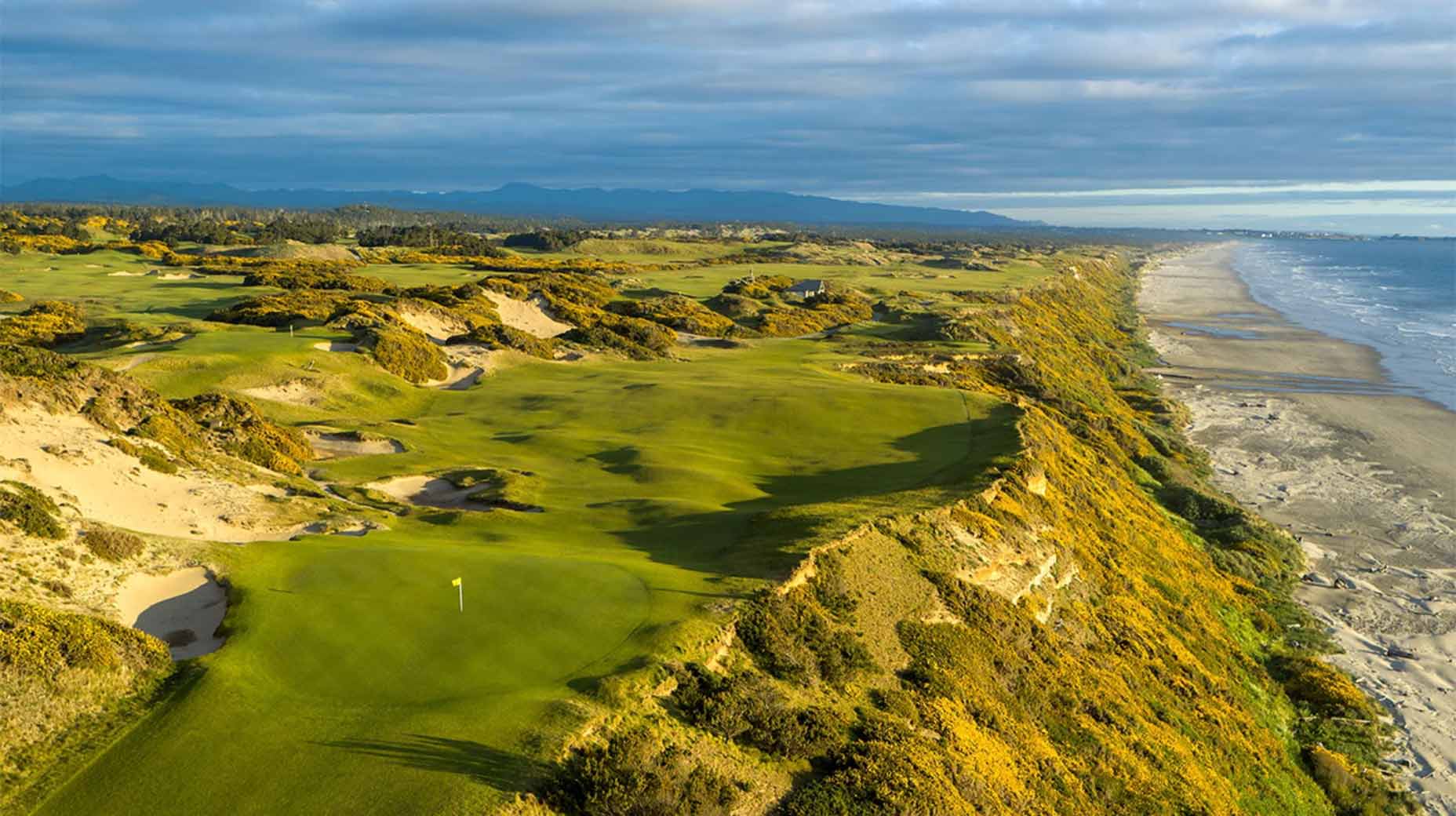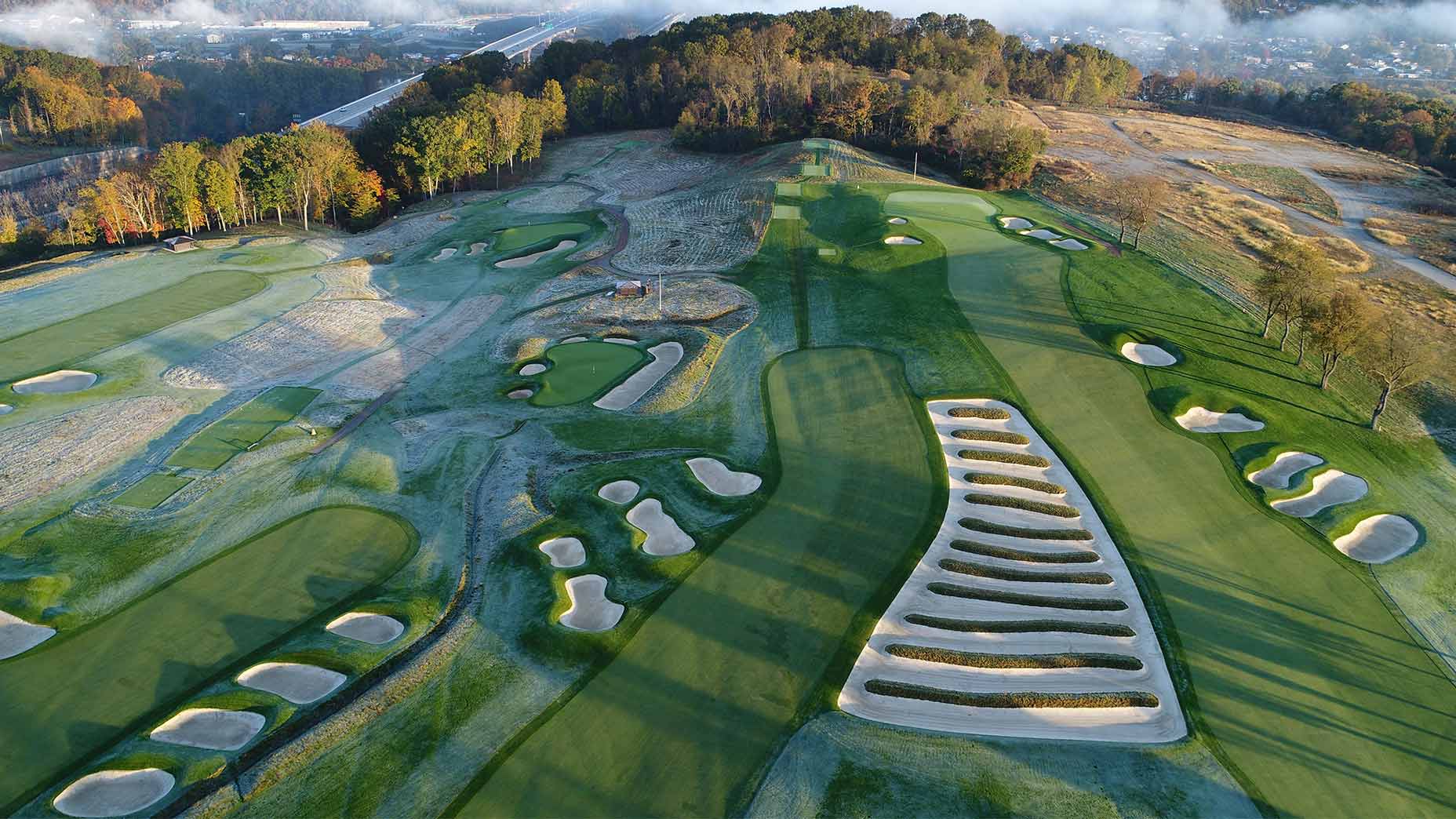 50 best golf courses in the Heartland | GOLF’s 2024-25 ranking
50 best golf courses in the Heartland | GOLF’s 2024-25 ranking
Chambers Bay is much better than you remember

It is difficult to detach our personal experiences from the courses where they take place. “That 76 was the best 76 because it happened at St. Andrews.”
Likewise, it can be difficult to think about elite championship courses without remembering how they played for the pros. Erin Hills is still a beastly test — despite what Brooks Koepka may think — and Chambers Bay, well, you remember Chambers Bay, right? It got a bad rap in 2015, but it’s much better than you remember.
Let’s jog that memory. You might recall Billy Horschel’s viral hand snake on the 9th green during the final round.
Horschel was three under on the day and happy to mock the setup, especially the greens. Henrik Stenson went as far as to say it was like putting on broccoli. And you might recall Rory McIlroy, who in a nimble press conference moment, said “if [the USGA] come back here in about 20 years time I’d be alright with that.” He was 26 years old at the time, aptly pushing a Chambers return outside the relevant bubble of his playing career. He’s a slick one, that McIlroy.
So, Chambers Bay must not be good, right? Wrong. Chambers Bay is actually quite great. With apologies to Bethpage Black and all its brawn, it’s probably the best municipal course in the country. Unlike its East Coast competitor, Chambers has room for artistry.
The fescue greens Horschel (as well as many of his peers) complained about were essentially operating in a microwave. Tacoma was unseasonably warm and dry during its seven-day run under golf’s magnifying glass. The two weeks directly preceding play saw average highs over 77 degrees (the norm is 70) and not a single drop of rain. Dry, long and menacing are all ingredients of the USGA’s Open recipe. Of course, the adolescent greens predictably struggled. Horschel complained. So did Ian Poulter. Just about everyone did. Jordan Spieth, it’s worth noting, did not complain. He won the tournament.
So the greens stunk in 2015, but in 2019 the course certainly does not. The newness has worn off, and the fescue has been replaced with poa annua from a farm in British Columbia. On a calm, sunny October day, the revamped greens played firm, fast and, most importantly, true.
But before we go any further, here’s one more infamous 2015 memory worth rehashing: Gary Player’s opinions running rampant.
ADVERTISEMENT
Player was entertaining in his delivery but ridiculous in his statements. The proverbial course he laid out exists only as a Platonic Form. Such a course is not possible here, in reality.
What is more realistic is that Chambers Bay was simply not ready to host the 2015 U.S. Open, and that is how it should be remembered, despite what YouTube will tell you. But the bones on which the USGA worked were chosen for a reason. The land is phenomenal, all of it falling toward Puget Sound. You are pulled uphill and pushed downhill, riding the turf right and riding it left. Generic as that may sound (I’m no course architecture savant), it makes for a fascinating collection of holes. Different looks into different approaches using different clubs. Chambers Bay delivers differently.
At its linksiest (in the clip above, Player dubs it a “British Open course”), Chambers is windy, long and infuriating. At its most calm the course still tests, via those same undulations that drove Player insane as a spectator. It’s not gettable in the way the Old Course at St. Andrews can be on a mild day. Punishment exists on every hole.
Chambers doesn’t wait to teach you about landing zones. Go left on 1, you’re rolling to a brutal collection area. (Chris Kirk learned about that, as did my college roommate.) Leave it short on 18 and you’re staring down three tiers and 100 feet for your two-putt. On the 9th, with it’s half-circle of differing tee boxes from all sorts of elevations, you’re likely aiming 20 yards left of the flag and praying gravity helps get you closer.

For now, we’ll leave you with the reason why Chambers Bay in 2015 was truly great: it’s finishing four holes, which torqued the tournament into a wild climax. You begin with the 15th and its Lone Fir, a short par-3 that stares out into the sound and the prevailing wind. What follows is a gettable par-4, but one of the only places on the property where out of bounds is in range (and in mind). Ask Branden Grace. All a good drive brings you is one of the trickiest second shots on the course.
The 17th, another par-3, is somehow the least great of these four finishing holes. It’s more demanding than the 15th, just as susceptible to wind off the sound and is split by a ridge that runs parallel to your ball flight. Either you’re in good position or you’re not. It’s up to you and that swing of yours.
Finally, the 18th we know so well, for reasons Dustin Johnson and Tiger Woods would love to forget. There might not be a better natural amphitheater in all of golf. At some point, McIlroy and the USGA will come around to it again. In the meantime, you should, too.
ADVERTISEMENT




 #chambersbay #chambersbaygolf #pnw #pugetsound #washingtonstate #thisiskempersports #usopengolf
#chambersbay #chambersbaygolf #pnw #pugetsound #washingtonstate #thisiskempersports #usopengolf


